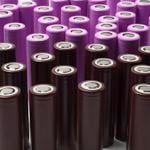A professor at the Georgia Institute of Technology, Zhong Lin Wang, says that he has invented a new form of energy technology that will change the world we live in “in the near future.” His discovery takes advantage of the simple reality that energy is all around us, but most of it, in the form of mechanical energy, is wasted. While we endlessly search for new sources of energy, we ignore the fact we are literally surrounded by it. Mechanical energy, says Wang, is always there, regardless of the weather, the season or the time of day.
Wang’s discovery is based on the triboelectric effect, or contact electrification, which he describes as the generation of electricity through rubbing or touching two different materials together. The phenomenon occurs with almost any materials, Wang says. When the two materials are in contact with each other, electrons can flow from one to the other. When the two are separated, one of the two holds an electrical charge, which can be turned into current by applying electrodes to the two surfaces.
“The fact that an electric charge can be produced through triboelectrification is well known,” Wang said. “What we have introduced is a gap separation technique that produces a voltage drop, which leads to a current flow in the external load, allowing the charge to be used. This generator can convert random mechanical energy from our environment into electric energy.”
The materials he uses have nanostructures applied to their surface to increase the surface area. The use of nanostructures increases the power density of the material by “a thousand times” Wang says. From initial experiments in 2011 which produced a power output of just 3 volts, Wang and his team have succeeded in creating 10,000 volts using the modified materials. A square metre of single-layer material can produce as much as 300 watts, he says. The material can be used in such things as clothing, shoes, backpacks, floor mats and foot pedals.
What are the potential sources of the mechanical energy? “Anything you can think of” says Wang, from finger tapping on a computer keyboard, to walking, to the motion of cars and trains, to the vast power of ocean waves. According to Wang, the energy potential in ocean waves is “theoretically” 31 terawatts, twice the total energy consumed in the world in a year. This energy could be harvested and used to power not only smaller applications like mobile phones and tablets, but also for much larger power needs.
And he is optimistic that this will happen soon. “Five years,” says Wang.






























